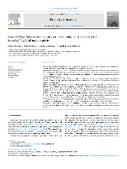Does shifting from normal to early or late sowing dates provide yield benefits? A global meta-analysis

Datum vydání
2024Publikováno v
Field Crops ResearchRočník / Číslo vydání
318 (November 2024)ISBN / ISSN
ISSN: 0378-4290ISBN / ISSN
eISSN: 1872-6852Metadata
Zobrazit celý záznamTato publikace má vydavatelskou verzi s DOI 10.1016/j.fcr.2024.109600
Abstrakt
Context: Shifting the sowing date has been proposed as a simple agronomic lever to enhance crop establishment, growth, and yield, which could be a climate change adaptation strategy. Objective or research question: Previous research showed that the experimental data assessing the effect of sowing date are not consistent and vary between trials and publications. We hypothesized that the difference in pedoclimatic conditions and management practices may be responsible for the contrasting impact of sowing dates on crop establishment, growth, and yield. Methods: A global meta-analysis of 94 studies and 3145 observations was conducted to quantify the effect of covariates related to crop types and pedoclimatic conditions in relation to early and late sowing dates compared to normal sowing dates. Results: On average, early sowing significantly increased seedling emergence vigor (53 %, confidence interval (95 %) = [49 %,58 %]) and disease and pest control (88 % [20 %,195 %]) without significant effect on plant biomass (2 % [-2 %,5 %]) and yield (-10 % [-20 %, +0.8 %]) compared to normal sowing date. In contrast, late sowing had no significant effect on seedling emergence vigor (28 %[-4 %,72 %]) or disease and pest control (14 %[-1 %,31 %]) while it significantly decreased plant biomass (-21 %[-21.42 %,-21.12 %]) and yield (-24 % [-28 %, -19 %]) compared to normal sowing date, in particular when the sowing delay exceeded three weeks and when the average minimum temperature was above 13 degrees C during the growing season. Conclusions: Early sowing does not affect crop productivity while late sowing reduces crop yield. Shifting from normal to late sowing dates may lead to yield losses exceeding 20 %, especially in warm conditions. Implications or significance: This study offers an important insight into the potential of crop yield improvement by adjusting sowing dates to aid decision-making in relation to specific pedoclimatic conditions and cropping practices.
Klíčová slova
Climate, Sowing date adaptation, Seedling emergence, Plant biomass, Pest and disease, Crop yield,
Trvalý odkaz
https://hdl.handle.net/20.500.14178/3045Licence
Licence pro užití plného textu výsledku: Creative Commons Uveďte původ 4.0 International



